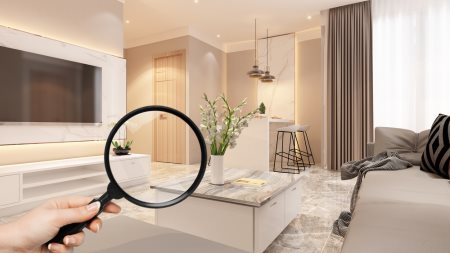Conducting an inspection of a rental property mid-way through the lease allows the landlord and tenant to identify any issues early on.
Although ingoing and outgoing property inspections are a legal obligation, not every landlord places that much importance on these. This of course leads to endless problems with regard to who damaged what and when the damage occurred. Unfortunately, it's usually the tenant who loses out in the long run when the landlord deducts money from the deposit to cover any damages. And yes, while it is possible to lodge grievances with the Rental Housing Tribunal, getting the issue resolved is going to take time and will generally impact on the tenant’s ability to put down a deposit on another home.
So how can tenants and landlords avoid deposit issues? One of the easiest ways is for the landlord to keep close tabs on what is happening on his property by conducting a mid-term inspection. In other words, an inspection is conducted, before, during and at the end of the lease period.
“A quick mid-lease inspection not only serves as a means of reviewing the condition of listed inventory, but also allows one to assess what’s really happening on the property,” says David Hutchison, sales director Property Sprout. “Is it being looked after? Is there maintenance work that needs to be carried out? Landlords and agents who maintain their properties regularly have the benefit of spotting small problems before they turn into large ones, which results in cost savings and a more valuable asset in the long run.”
He adds that the cost of a mid-term inspection is a small price to pay for the protection of your most valuable asset.
“Handing the keys over to a new tenant is never easy, and despite rigorous reference checks, the risk of landing a bad tenant can be high. Reduce the risk by performing joint ingoing, outgoing and mid-term inspections with photographic evidence; this way, the landlord or rental agent can closely monitor the property, assess damage and negotiate replacement and/or repair costs with the tenant throughout the term of the lease. Likewise, this will also give the landlord the opportunity to put the tenant on terms should they find that any aspect of the lease agreement is being breached.”
Staying on top of things can also help prevent disasters before they happen. Issues such as mould or blocked drains can end up causing major (and costly) problems for landlords. Unfortunately, however, this sort of problem often goes unreported during the lease period because the effects don't directly impact the tenant.
Another issue which often come to light during a lease is subletting. Hutchison says this is a common challenge for landlords because it not only increases the wear and tear on the property, but also renders the reference check null and void.
Animals are yet another aspect that can be hugely problematic if tenants are left to their own devices. While there are instances where tenants are allowed to have pets, landlords who are concerned about keeping the property in good condition will often limit the number of animals allowed on the premises. And remember, it's not just the inside of a property that needs to be checked. Not all tenants are created equal and as such not all will take care of the garden and/or pool to a satisfactory degree.
Although it's an aspect that's often overlooked, forging a good relationship with a tenant is imperative and knowing where each party stands during the lease is key. “Conducting a mid-term inspection creates an open dialogue with the tenant and can highlight any issues to be resolved early on,” says Hutchison. “Good tenants can be hard to come by, so maintaining a healthy relationship with the good ones is a smart way of future-proofing your property and avoiding an unpleasant experience.”




